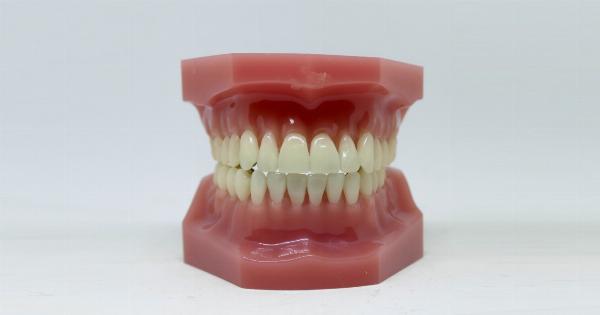Having a dazzling white smile is something that many people desire. It can boost self-confidence and make a person’s appearance more attractive.
However, teeth can become discolored over time due to factors such as aging, poor dental hygiene, and dietary choices. Teeth whitening treatments have become increasingly popular over the years, offering a quick and easy solution to this problem.
But, which option is right for you? Let’s take a closer look at the pros and cons of some of the most popular teeth whitening treatments.
1. In-Office Teeth Whitening
In-office teeth whitening is a popular option that involves visiting a dental professional for a treatment. The procedure typically involves applying a whitening gel, which is activated by a special light to lift stains from teeth.
Pros:
- Faster results – In-office whitening can typically provide visible results in just one session.
- Professional quality – In-office treatments are performed by a dental professional and use stronger solutions than over-the-counter options, resulting in a more noticeable improvement in tooth color.
- Lasting results – The results from in-office whitening can last up to a year with proper maintenance.
Cons:
- Cost – In-office whitening is often the most expensive option.
- Sensitivity – Some people may experience sensitivity during or after the treatment due to the strong solutions used.
- Time commitment – In-office treatments can take up to two hours, so patients must be willing to spend a decent amount of time at the dentist’s office.
2. At-Home Whitening Kits
At-home whitening kits are a popular option because they are widely available and can often be less expensive than professional treatments. These kits typically include a whitening gel that is applied to teeth using a tray.
The trays are similar to those used in a dentist’s office, but are molded to fit the patient’s teeth at home.
Pros:
- Convenience – At-home whitening kits can be used at any time and in the comfort of one’s own home.
- Cheaper – At-home kits are often much less expensive than in-office treatments.
- Customizable – Patients can choose the length of time they want to whiten their teeth, as well as how frequently they use the treatment.
Cons:
- Less noticeable results – At-home kits may not provide the same dramatic results as in-office treatments.
- Possible gum irritation – If the whitening gel comes into contact with the gums, it can cause irritation or sensitivity.
- Longer time for results – It may take several treatments over a few weeks to see noticeable results.
3. Whitening Strips
Whitening strips are a common over-the-counter option that is widely available in drugstores. They are small, flexible strips that are coated with a thin layer of whitening gel and are applied directly to teeth.
Pros:
- Cheaper – Whitening strips are relatively inexpensive and widely available.
- Easy to use – Strips are simple to apply, remove, and dispose of. No trays or special equipment are necessary.
- Convenient – Strips can be used anywhere, at any time.
Cons:
- Less noticeable results – Like at-home kits, whitening strips may not provide the same dramatic results as professional treatments.
- Possible gum irritation – The whitening gel on the strips may come into contact with the gums and cause irritation or sensitivity.
- Short-lived results – The results from whitening strips may only last a few months, and frequent treatments may be necessary.
4. Charcoal Whitening
Charcoal whitening has become increasingly popular in recent years as a natural alternative to traditional teeth whitening treatments. Charcoal is believed to absorb impurities and toxins from teeth to create a brighter, whiter smile.
Pros:
- Natural – Charcoal is a natural ingredient, making it a popular choice for those who prefer all-natural products.
- Gentle – Charcoal is less likely to cause sensitivity or irritation than some other options.
- Cheaper – Charcoal products are generally quite affordable.
Cons:
- Less noticeable results – Charcoal may not provide the same dramatic results as professional teeth whitening treatments or even at-home kits.
- Possible damage to teeth – The abrasive nature of charcoal can cause damage to tooth enamel over time, making teeth more susceptible to decay and discoloration.
- Not ADA-approved – Charcoal products are not approved by the American Dental Association, and their long-term effects on teeth are not yet known.
The Verdict
Each teeth whitening option has its pros and cons. In-office whitening delivers the fastest and most noticeable results, but is also the most expensive.
At-home kits and whitening strips are more affordable and convenient, but may not provide the same dramatic results as in-office treatments. Charcoal whitening is an all-natural option, but its effectiveness and long-term effects on teeth are still unknown. It is important to consider individual needs, budget, and lifestyle when deciding on the best teeth whitening option.
Consult a dental professional before starting any whitening treatment to ensure that it is safe and appropriate for one’s unique situation.


























